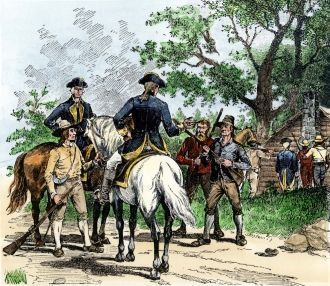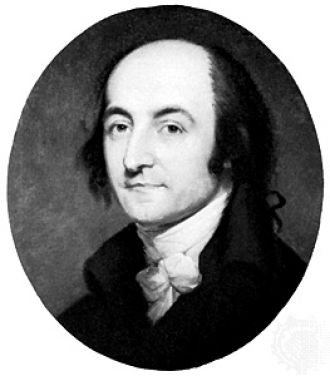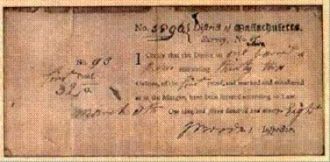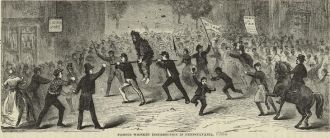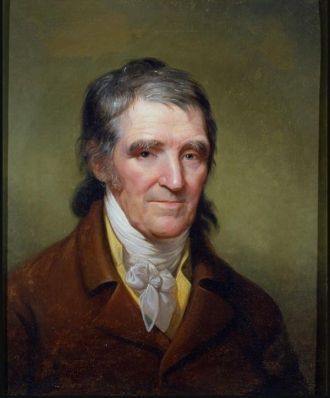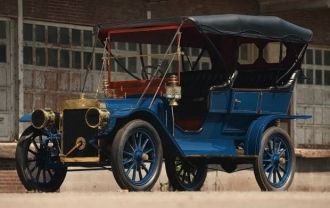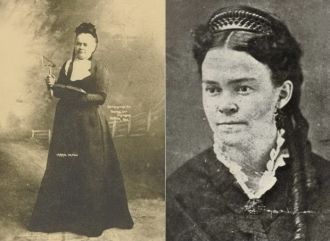USA
In 1794 thousands of farmers in western Pennsylvania took up arms in opposition to the enforcement of a federal law calling for the imposition of an excise tax on distilled spirits. Known as the "Whiskey Rebellion," this insurrection represented the largest organized resistance against federal authority between the American Revolution and the Civil War. A number of the whiskey rebels were prosecuted for treason in what were the first such legal proceedings in the United States.
Congress established the excise tax in 1791 to help reduce the $54 million national debt. The tax was loathed across the country. For a small group of farmers west of the Allegheny Mountains, the federal excise tax was singularly detestable. Bartering was the chief means of exchange in this frontier economy, and distilled spirits were the most commonly traded commodity. Cash was a disfavored currency in western Pennsylvania during the late eighteenth century, but whiskey, especially Monongahela Rye, was as valuable as gold. Whiskey was considered an all-purpose liquor, with locals using it for cooking and medicine, and drinking it at social occasions, among other uses.
By modern standards the excise tax of 1791 does not seem oppressive. Distillers were taxed based on the size of their stills. Stills with the capacity to annually produce at least 400 gallons of whiskey were taxed between 7 and 18 cents a gallon, depending on the proof of the liquor. Distillers who made stronger whiskey paid a higher tax. Smaller stills were taxed at a rate of 10 cents for every month a still was in operation, or 7 cents for every gallon produced, whichever was lower. Based on these rates, the average distiller was required to pay only a few dollars in liquor tax each year. But even an annual tax of $5 would have consumed a large percentage of the disposable income earned by farmers in the barter-based economy of western Pennsylvania.
The rebellion began in Pittsburgh during October of 1791 when a group of disguised farmers snatched a federal tax collector from his bed, and marched him five miles to a blacksmith shop where they stripped him of his clothes, and burned him with a poker. Over the next three years dozens of tax collectors were beaten, shot at, tarred and feathered, and otherwise terrorized, intimidated, and humiliated. The home and plantation of John Neville, the chief tax collector for southwestern Pennsylvania, were burned to the ground.
By 1794 the excise tax lay largely uncollected in western Pennsylvania. The national debt was rising, and respect for federal authority was waning. Rebel forces had swelled to 5,000. In October President george washington dispatched 15,000 troops to quell the resistance. Led by alexander hamilton, Washington's secretary of state, the federal troops met little opposition. Within a month, most of the rebels had dispersed, disavowed their cause, or left the state. Keeping a few soldiers in western Pennsylvania to maintain order, the federal army departed for Philadelphia, having arrested more than 150 people suspected of criminal activity.
In May of 1795 the Circuit Court for the Federal District of Pennsylvania indicted thirty-five defendants for an assortment of crimes associated with the Whiskey Rebellion. One of the defendants died before trial began, one defendant was released because of mistaken identity, and nine others were charged with minor federal offenses. Twenty-four rebels were charged with serious federal offenses, including high treason. Two men, john mitchell and Philip Vigol, were found guilty of treason, and sentenced to hang. Seventeen defendants were convicted of lesser crimes, and sentenced to prison terms of various lengths. Upon learning that none of the convicted rebels were principally responsible for instigating the armed resistance, Washington pardoned each of them.
By extinguishing the Whiskey Rebellion, the U.S. government withstood a formidable challenge to its sovereignty. Preceded by shays's rebellion in 1786, and followed by fries's rebellion in 1799, the Whiskey Rebellion is distinguished by its size. While all three rebellions were motivated by their opposition to burdensome taxes, neither Daniel Shays nor John Fries ever gathered more than a few hundred supporters at any one time. On at least one occasion, as many as 15,000 men and women marched on Pittsburgh in armed opposition to the federal excise tax on whiskey.
The Whiskey Rebellion also occupies a distinguished place in American jurisprudence. Serving as the backdrop to the first treason trials in the United States, the Whiskey Rebellion helped delineate the parameters of this constitutional crime. Article III, Section 3 of the U.S. Constitution defines treason as "levying War" against the United States. During the trials of the two men convicted of treason, Circuit Court Judge william paterson instructed the jury that "levying war" includes armed opposition to
the enforcement of a federal law. This interpretation of the Treason Clause was later applied during the trial of John Fries, and remains valid today.
Source: http://www.encyclopedia.com/topic/French_Revolutionary_Wars.aspx



 Japan, Usa
Japan, Usa